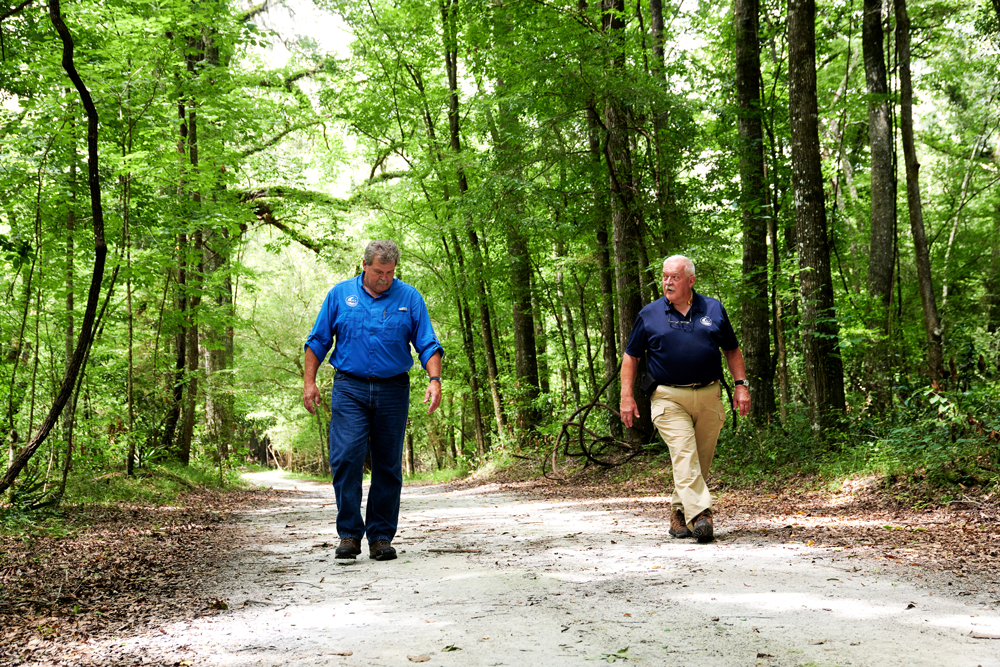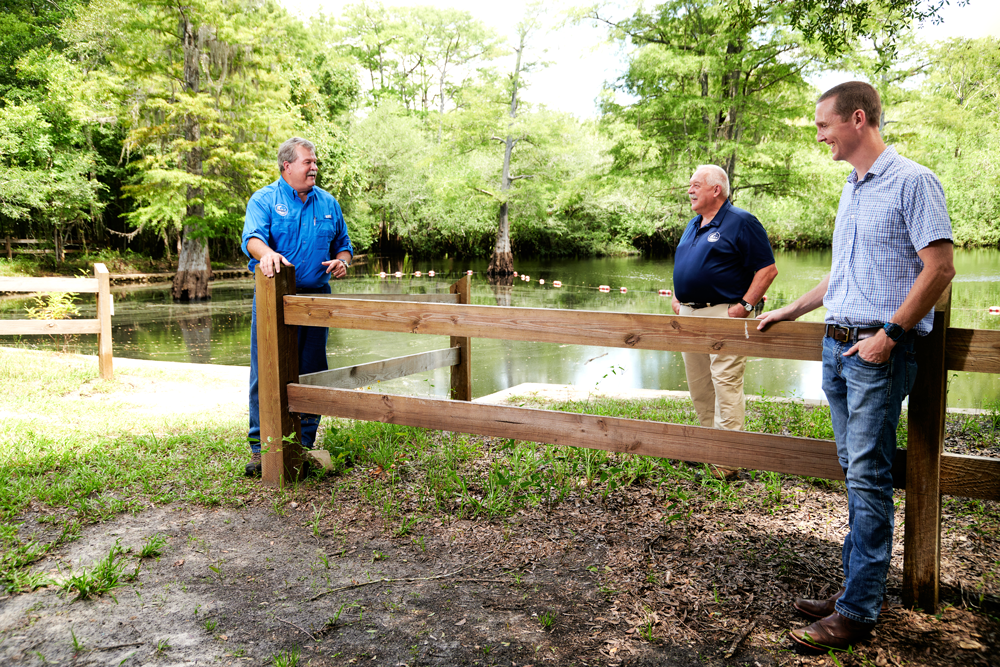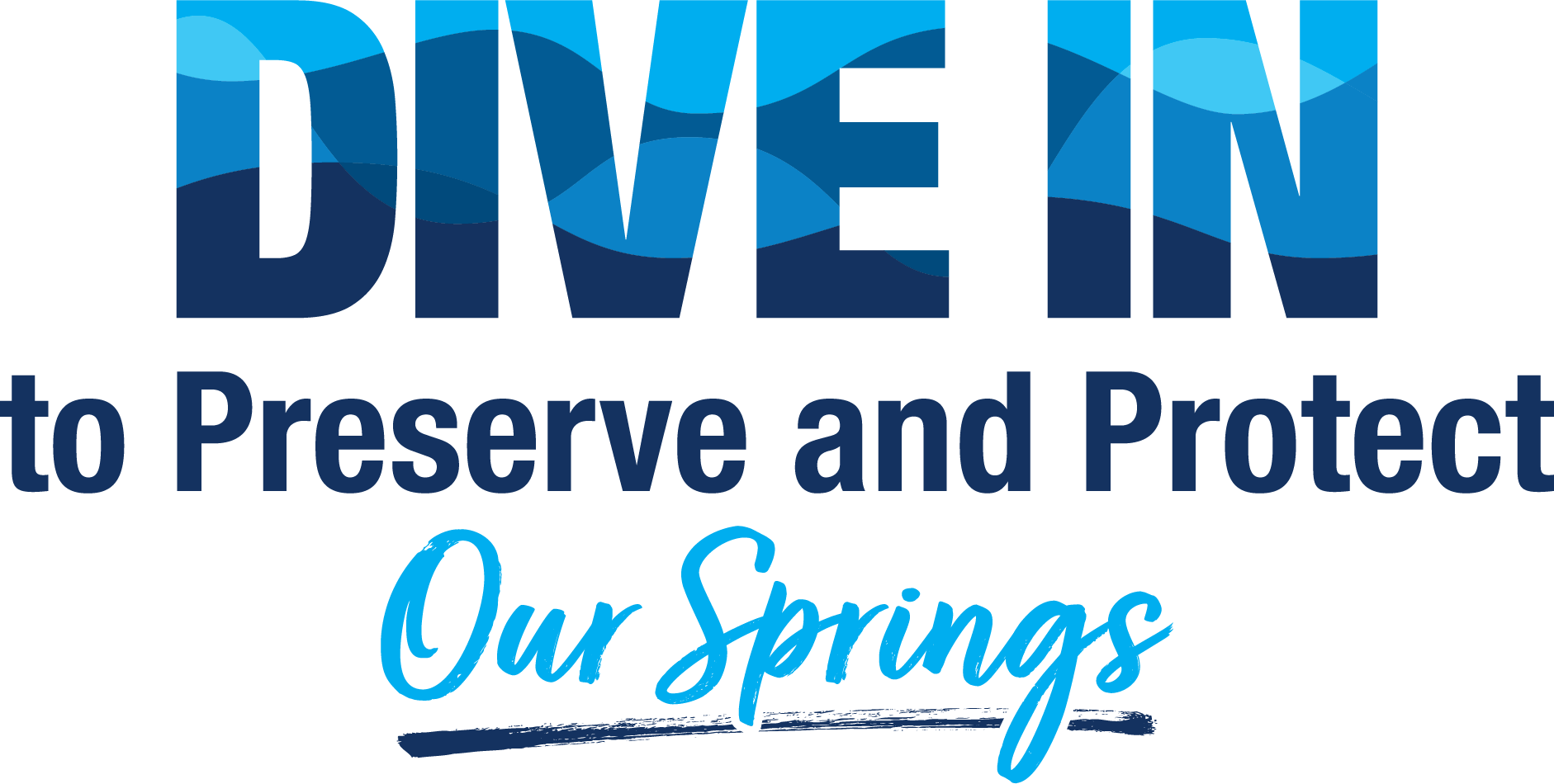Learn more about how J.H. Anderson Jr. Memorial Park came to be
“There are properties the public needs to own for enjoyment and to keep them as pristine as possible for generations to come,” explained Donald Quincey, Jr., Suwannee River Water Management District former board member and Chiefland area resident.
To Quincey, Rock Bluff Springs is one of those properties. The 700-foot “spring run” along the Suwannee River is often crystal-clear and features large cypress trees in its center.
Before 2019, the area was privately owned and public access was limited to those with a boat. Now, thanks to a public-private collaboration, the spring and the land around it are public and preserved through what has become the J.H. Anderson Jr. Memorial Park, protecting Rock Bluff Springs and encompassing an added 170 acres on the Suwannee River.
With the help of state partners, the Suwannee River Water Management District was able to match funds and acquire the property. The District funds and manages initial facility improvement projects, while Alachua Conservation Trust (ACT) is responsible for long-term maintenance.
“I remember enjoying the springs with my father and grandfather,” said Edwin McCook, Suwannee River Water Management District land management specialist. “But as laws changed so did access to the springs. Now, I know my son, grandsons and so many members of the community who would not have otherwise had access will be able to enjoy this gem for years to come.”
A Teaching Tool
Hugh Thomas, executive director of the Suwannee River Water Management District, shared that the land is especially great for Florida geology teaching opportunities because of its karst windows showing the movement of the water.

“Here in Florida, our peninsula is on a foundation of limerock,” Thomas said. “Limerock, while hard, is still considered a soft rock — ‘karst windows’ and sinkholes form over time from naturally acidic rainfall that dissolves soft areas of the rock. So, you actually wind up with a swiss-cheese looking geology. Water moves within this structure of Florida’s aquifer.”
Thomas explained that water can flow in and out of a spring. The property around Rock Bluff Springs features more than a dozen examples of these karst windows that are open — the hole sizes vary by shape and size, but water can be seen moving inside, like windows into underground rivers. The “sponge” of connections means when the river runs high from rain waters, tannic water naturally stained by deciduous leaves (brown in color) pushes up into the spring and back into the aquifer.
“We have a lot of visitors to this area, and I think we are missing an opportunity if we don’t educate people about the need to protect these springs and our river systems also,” Thomas added. “By and large, what I have seen, is that if people know how to be protective, they do it. But a big part of it is not being aware of what they can do, which is why education about our springs is so important.”
Preservation through Land Management
Thomas added that preserving Rock Bluff Springs through conservation — protecting it from development — means helping protect it from water quality and water supply concerns.
Adam Blalock, deputy secretary for the Department of Environmental Protection, oversees ecosystem restorations and implementation of environmental funding.
“One of the things we’ve been able to accomplish recently is multi-year projects that allow us to do more,” Blalock said. “The Governor’s (DeSantis) commitment to seeking Spring funding in subsequent years allows us to look for projects we can fund longer and go after things that would not have been possible in past budget years. With Rock Bluff Springs, we were able to help fund its protection since it is benefitting local springs along with the Suwannee River.”
Park Features
Around 60 members of the community attended a public meeting to discuss how they would like to see the park managed and the types of infrastructure they would like to see at the park. Project partners worked to balance boat and driving access. Visitors can still enter the spring by boat, and to protect swimmers, a buoy line was added across the spring for the designated swim area.

In addition to swimming, picnicking by the water and nature watching, visitors can explore the natural areas around the springs, and future plans include informational kiosks and walking trails. The property also features hard-wood live oak hammocks, wetlands and wildlife such as turkey and deer. The District plans to do a cultural resource / archaeological survey as well.
Tom Kay is the executive director of Alachua Conservation Trust, which has been managing the park since its grand opening in May of 2019.
“The big goal was increasing public access to the property and ensuring water quality would be the same or better,” Kay added. “This is a jewel for the public to enjoy. We feel strongly about trying to keep it intact. Rock Bluff Springs is part of the emerald necklace of North Central Florida. I thank the Anderson Family and previous owners for being good stewards of this land and for sharing it with all of us.”
